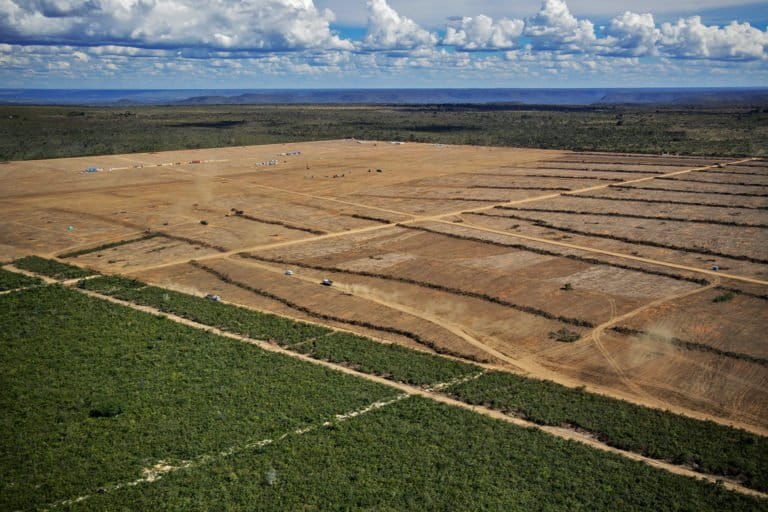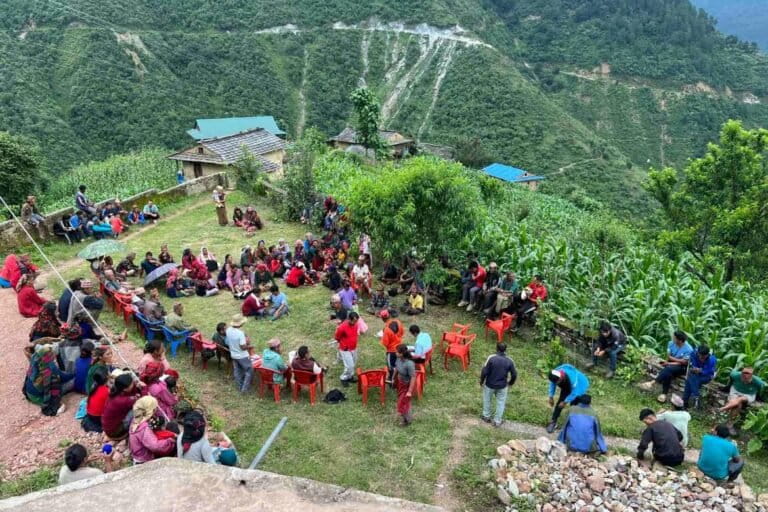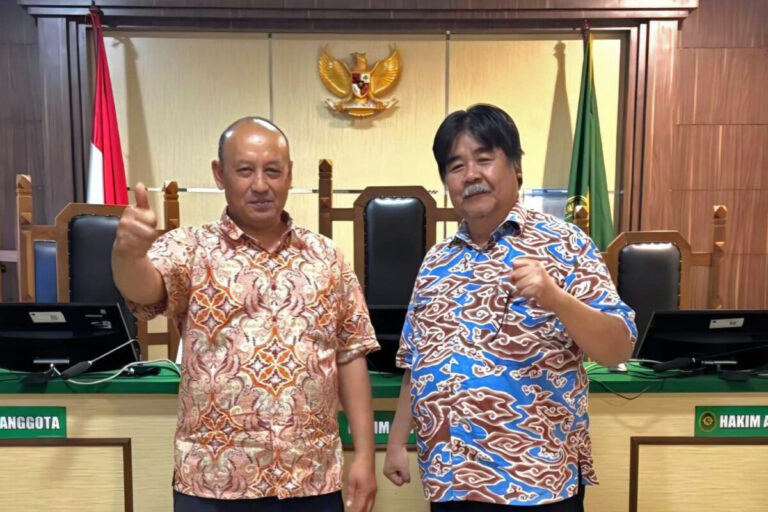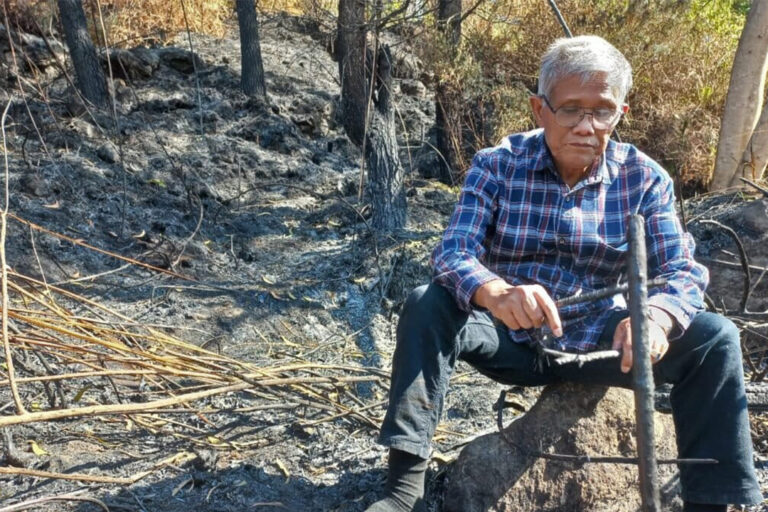- Lola ya Bonobo, the world’s first bonobo sanctuary, was founded in 1994 by Claudine Andre, who came to the Democratic Republic of the Congo (DRC) at a young age, and who, after a chance meeting with a bonobo at the Kinshasa zoo, dedicated her life to the species. Today, Lola has been recognized worldwide as a model for primate rehabilitation.
- The sanctuary primarily credits “inclusive conservation” for its success, a process by which Lola not only cares for rescued DRC bonobos, but also for nearby human communities — supporting farms, schools and medical facilities. The communities in turn support Lola.
- The bonobos at the sanctuary — often traumatized after being rescued from the great ape trade — spend years in rehabilitation, being served by human foster mothers and other caring Lola staff. When deemed ready, bonobo troupes are returned to the wild Congo.
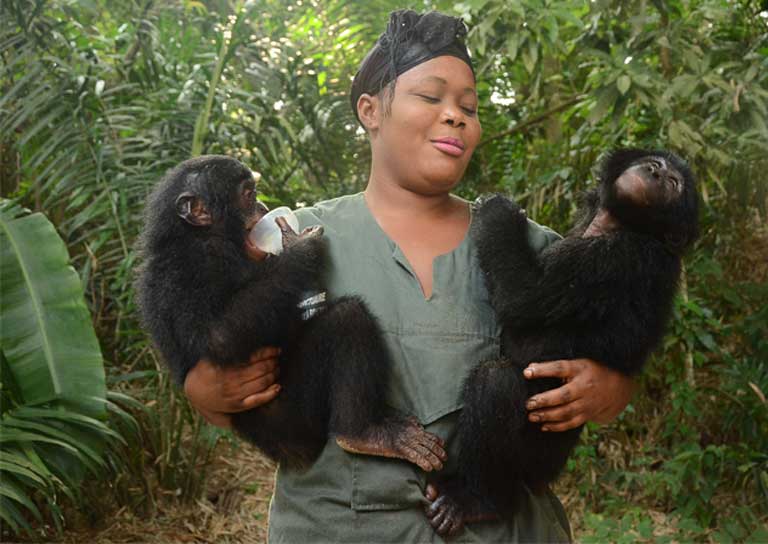
The dramatic urban energy of Kinshasa, the Democratic Republic of the Congo’s capital, seems a world away from the green expanse of the Lola ya Bonobo sanctuary in Les Petites Chutes de la Lukaya — a 75-acre forest reserve that is home to more than 70 rescued bonobos, humanity’s closest kin.
Inside the sanctuary, bonobo screeches rise above the flowing rush of the Lukaya River. The sanctuary’s name translates as “the paradise of bonobos” in Lingala. It’s a safe haven for the great apes rescued from a fate that others of their kind suffer when captured for bushmeat, to become pets or circus animals. At Lola ya Bonobo they find a home with a human foster mother, heal from the trauma of their illegal capture, and are given a second chance at life through a rehabilitation program.
Known as the “hippies of the forest,” bonobos are peace-loving great apes that fascinate conservationists, activists and the general public. Unfortunately for them, their trusting natures make these primates easy targets for hunters. Poaching and habitat loss have left as few as 15,000 bonobos in the wild today. The species is listed as Endangered by the IUCN.
These great apes, with which we share 98.7 percent of our genetic makeup, are unique and worth conserving for an array of reasons: the only place they are found naturally is in the Congo; the females are the “alpha males” of the species; bonobos resolve most conflicts with their fellows through sex, dissipating tensions with lovemaking; and they act as a vital link in an understanding of our evolutionary history.
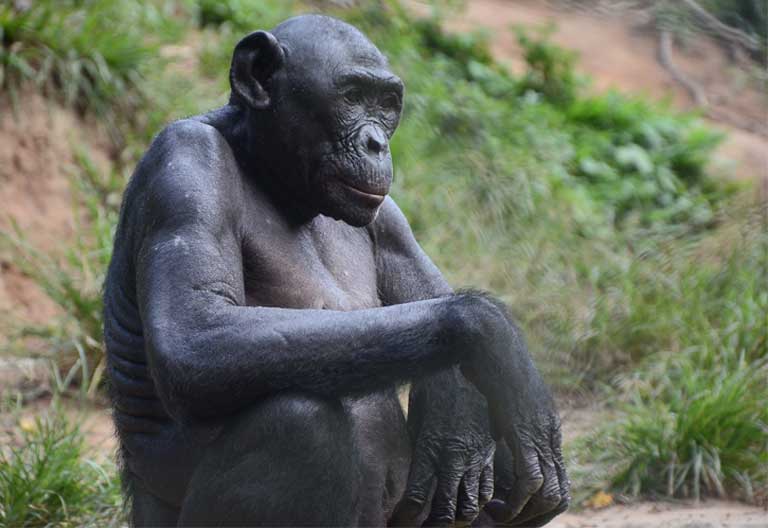
A sanctuary’s birth
The founder of Lola ya Bonobo, Claudine Andre, arrived in Kinshasa from Belgium at a young age with her veterinarian father. As she recounts on the Lola website: “My first school was the forest.” She spent her childhood surrounded by and committed to nature.
As an adult in 1993, when a young bonobo arrived at the city zoo at which she volunteered, the two formed a bond that would guide Claudine’s major life decisions. She dedicated herself to establishing a sanctuary for bonobos, and to raising public awareness of their need for protection — goals Claudine achieved while simultaneously raising her own five children.
In 1994, she opened Lola Ya Bonobo, the first bonobo sanctuary in the world, an institution that has endured through financial uncertainty, political instability and even armed conflict. Claudine has since been awarded the National Order of Merit by France, and the Prince Laurent Prize of the Environment by Belgium. Today, she travels the globe raising awareness of the bonobos’ plight, while also raising funds to make sure her bonobo paradise keeps flourishing.
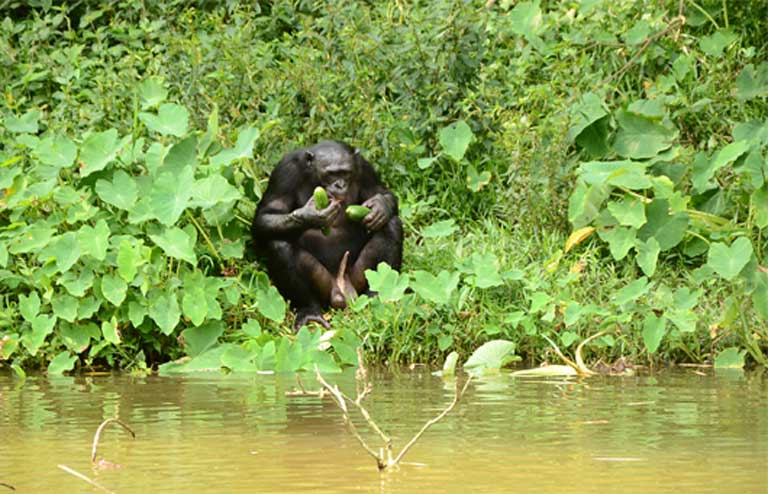
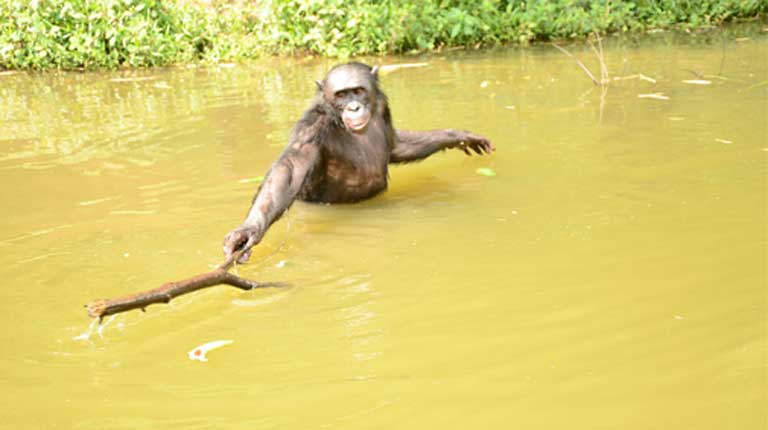
The bonobo brain
A quick visit to the sanctuary reveals the bonobos’ extraordinary intelligence, an aptitude that has been witnessed many times by those dedicated to caring for the animals. “We realized they can understand three languages,” exclaims the resident veterinarian Raphaël Belais like a proud father. The animals, he says, respond to “French, English and Lingala.”
When planning medical treatments, the staff now regularly speaks out of hearing range from bonobo enclosures, as the bonobos recognize their names being spoken, even as much as a day in advance, and then hide to avoid receiving medications.
These great apes know the time of day their food will arrive, and use rocks as tools to crack open nuts and seeds — a technique taught to the sanctuary’s bonobos by two new arrivals and a discovery that then spread like wildfire to all the bonobos within the reserve.
The bonobos’ sophisticated intelligence is matched by their amicability, which is a valuable survival technique. Studies have shown that chimpanzees under stress release testosterone, making them more aggressive. In bonobos, cortisol (a stress hormone) is released, but conflict isn’t the result. Instead, cortisol pushes bonobos to seek physical assurance. Further studies have shown that this loving tendency leads to better cooperation and makes bonobos more effective than chimps in food retrieval.
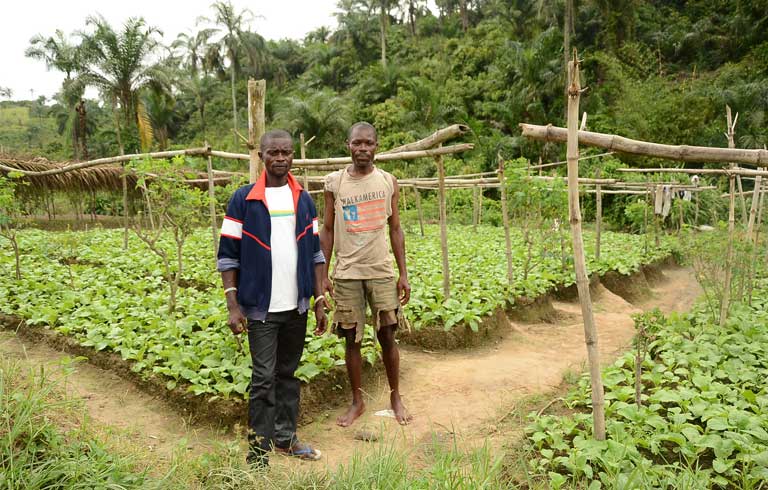
Conservation through community
A short motorbike ride away from Lola is the community of Mamfufu. Here, residents weed and water their small gardens with no visible connection to the bonobos nor the sanctuary. These gardens are, however, an essential piece in the sanctuary’s community engagement strategy.
“Conservation does not work if you are only thinking about the animals,” explains Fanny Minesi, Claudine’s daughter and the sanctuary’s operations manager. “We need to think about the [human] community too, and how their wellbeing can benefit the animals, and vice versa.” This ethos is carried into Lola`s community farming campaigns, such as the one found in Mamfufu.
But how one imagines the human community will benefit, and how people will actually end up benefiting can be two very different things, says Fanny. In explanation, she offers up the example of naïve international development agencies distributing mosquito nets to African communities who then used them as fishing nets instead. “We need to communicate with the [local] community, incentivize them and include them in the conservation process.”
This close relationship between sanctuary and community is especially strong for the local farmers in Mamfufu and in nearby communities who supply almost all of the food for the bonobos. The farmers were trained to their task via a Lola initiative — acquiring the skills and materials needed to farm sustainably and provide the cucumbers, onions, lettuce and more, that goes towards feeding 70 hungry bonobos.
“Farming has helped me support my children and their school fees,” explains Junior Mbo, the community’s farming president, standing proudly alongside his blossoming crops. “Before, everything was haphazard and the seeds would run away in the rain. Now we keep track of how much is planted and grown.”
The community is tied to Lola in other ways. Mamfufu Primary, the local school, relies on the sanctuary for writing materials and other help. School principal Michel Mukoko, points out a dilapidated structure: “This is the building of the school. It is not easy. It is risky as it could fall down, but Lola helps a lot with stationery and support.”
As a result, Lola has a reputation in the surrounding area not only for rescuing bonobos, but also as a backer of farms, schools, and hospitals — providing beds, medical supplies and training are all part of Lola’s developmental mission.
“This is what makes Lola work,” reflects Raphaël. “This [support] makes people believe in the [bonobo] project, and that’s why the local population wants to help. They know that our goal is to protect the bonobos, but it is not only that — it is also about the people.”
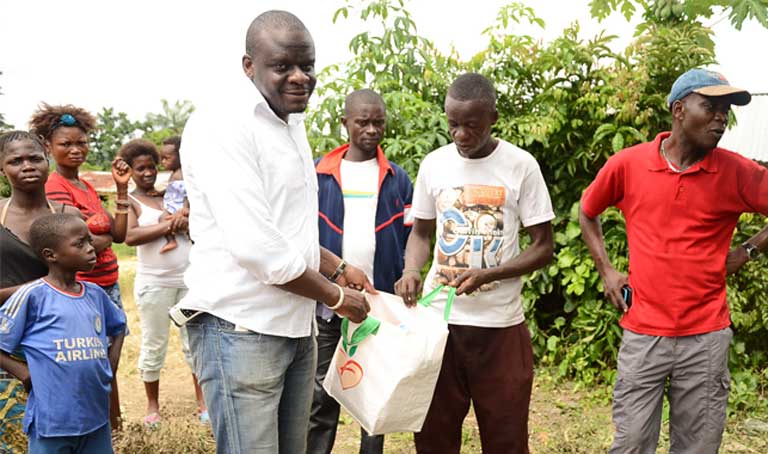
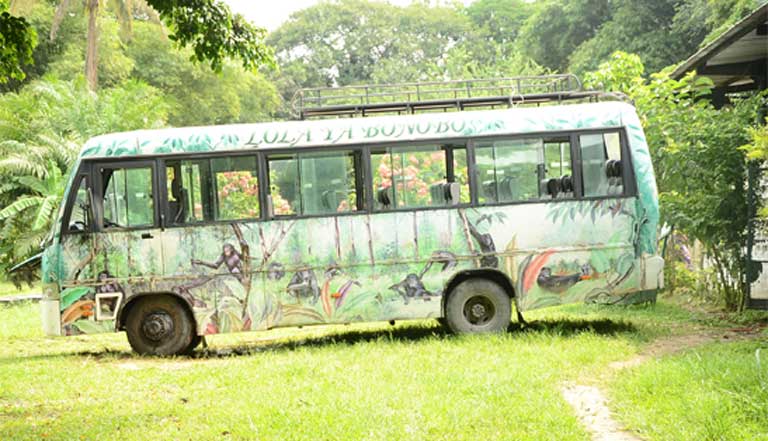
Conservation through education
One of the most influential and effective ways in which Lola has engaged with the community is through its educational programs; as many as 20,000 school children visit the sanctuary annually to learn about the bonobos.
Susie Katwenda, Lola’s biologist and a researcher, has worked with the sanctuary for eleven years and is one of the notable personalities that school children encounter on their visits: “What do local people care about conservation?” she asks bluntly. “Local people in the equatorial forest need something to eat. We try to help animals, but also we are taking care of the people too. Because if people are still hungry they won’t care; they won’t have ears to listen.”
Lola’s educational programs always involve a dialogue, says Katwenda. This means that local people can express their needs and concerns, that they feel listened to and that their cultural traditions are being respected. “We make [the people] responsible for the bonobos too, and help them with fishing and farming so they have other means of survival [rather than hunting]. We fight together for the bonobos.”
Among Lola’s chief allies and resources are the local children. They often alert the staff when bonobos are captured and held locally in cages or are being sold in markets. Four rescued bonobo orphans currently living at the sanctuary were rescued due to student tip-offs.
Lola’s educational process is well structured: first, the staff travels to the schools to show the children pictures of the bonobos and talk about the animals’ behaviors. A visit to the sanctuary comes next, along with a movie and a snack. “So they learn, but it is also an adventure,” says Katwenda.
Susie’s proudest moment was when she was contacted by locals who had captured a bonobo in the forest with the aim of selling the animal. But then they had a change of heart. “They contacted us and apologized. The bonobo was wounded. We created a plan to bring her here [to the sanctuary]. It was a wonderful moment — to see the community involved in the protection of the bonobo. To see how their [thinking] had changed.”

Conservation through rehabilitation
Visitors to the sanctuary are often reminded of the genetic similarities our two species share, especially when they see how newly arrived bonobo orphans relate to their human foster mothers, who care for the animals until they are ready for introduction to their fellow bonobos. Their morning rituals together are fascinating and fun to watch. The baby bonobos look akin to hairy, highly agile, but very mischievous, three-year-old humans. They are bathed with buckets of water and their fur is rubbed with oil before they are fed milk from a bottle. The bonobos seek out “tickles,” get jealous when a sibling gets tickled first, eat fruit with fervor, and chase one another up their jungle gym.
Seeing their spirited activity makes one almost forget the trauma these bonobos suffered before arriving at the sanctuary: many likely saw their mothers killed and butchered as bushmeat before being captured and tied up or caged themselves.
The blissful bonds achieved with their foster mothers are all part of the slowly unfolding rehabilitation process. This is how their healing begins: being loved by the same species that harmed them in the first place. The lengthy rehabilitation process, which takes multiple years to accomplish with the different troupes, comes to a conclusion when the bonobos are released back into their wild Congo basin habitat.

Going home
It is late afternoon at the sanctuary. Insects buzz through the heavy humidity as the sun becomes less intense and the forest begins to darken. A troupe of bonobos has gathered near the river, awaiting the sugarcane treats about to be distributed by Jean Claude Nzumbe, one of Lola’s oldest and most experienced caretakers. Jean Claude’s connection to nature began at a young age. As a small child he would gather up injured insects in a toy cart to protect them, earning him the nickname “Mr. Butterfly.”
Mr. Butterfly will shortly say goodbye to this bonobo group, which will soon be taken to Ekolo ya Bonobo, “the land of the bonobos” to complete their rehabilitation. This 20,000 hectare (77 square mile) forest lies within the Congo basin, near the city of Basankusu.
Here too, Lola works closely with the local human community, offering educational services and providing better access to healthcare. Lola supplies equipment for a women’s birthing center, pharmacy medications, and educational materials for the schools. Thanks to this support, the community has come to better understand the value and importance of the bonobos in their new habitat, and to firmly support Lola’s mission.
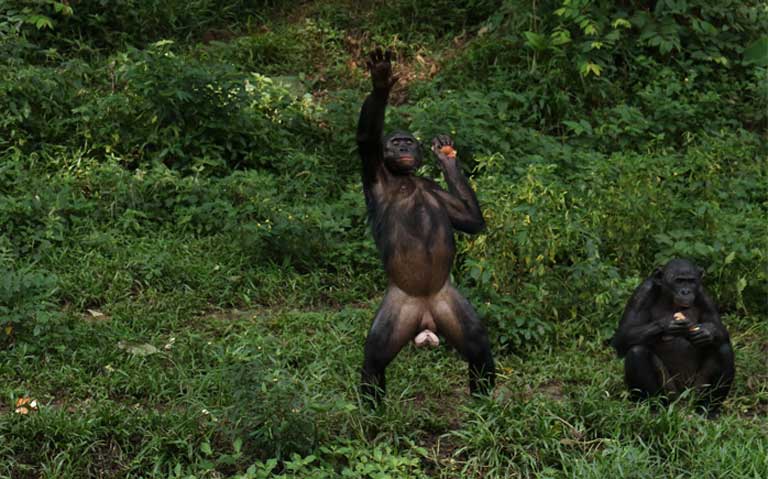
Over his long tenure, Jean Claude says that he has seen it all: he was on hand when the first bonobos were brought to the sanctuary back in 1994, and later when the world’s first bonobo release into their natural habitat was a success in 2009.
Does he ever regret having to say goodbye to his “children” as they move off, back into the forest? “No,” he responds. “This is what is supposed to happen.”
Despite this acknowledgment, Jean Claude gets tears in his eyes when he recalls how the first troupe to be rehabilitated reacted when he visited them in the forest six years later: “They saw me and immediately started shouting and dancing. It made me realize how special they are as a species and why it is so important to protect them. They had adapted so well, they were so happy, but they still remembered me. It was a special moment and I was very moved.”
Bonobo rehabilitation is a painstaking process that takes time, energy and attention. It involves years of nurturing by human foster mothers and staff who help the traumatized animals heal. “They have taught me patience,” reflects Jean Claude. “And also that everything is settled by love.”
FEEDBACK: Use this form to send a message to the author of this post. If you want to post a public comment, you can do that at the bottom of the page.









